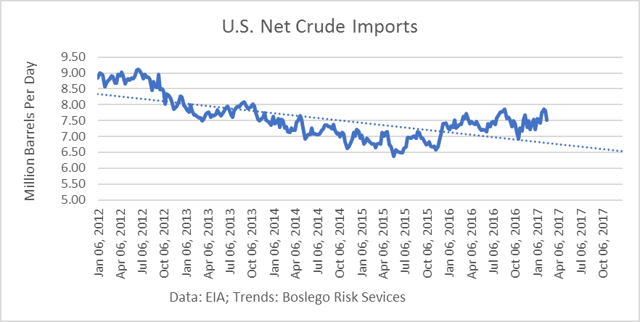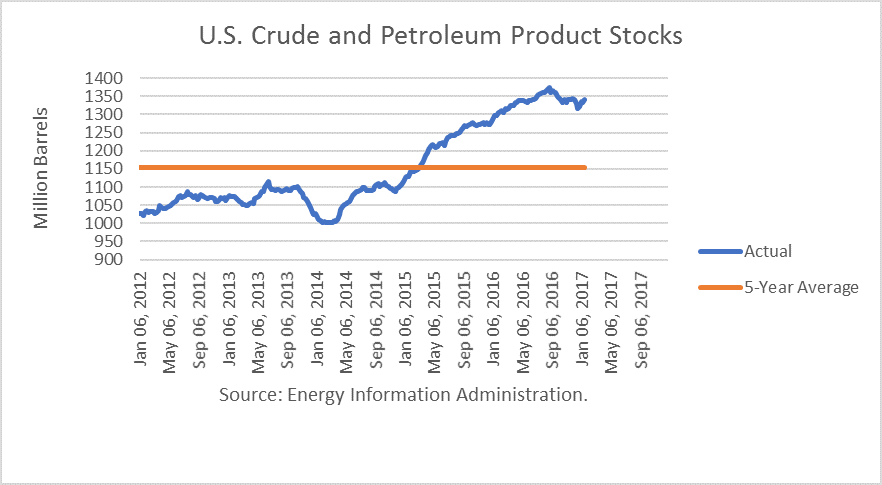
According to the Kuwait News Agency, Kuwait Oil Minister Essam Abdul Mohsen Al-Marzouq, chairman of the Joint OPEC-Non-OPEC Ministerial Monitoring Committee (JMMC), has stated that February compliance by OPEC was 140%. But according to the figures that OPEC members submitted to the organization, compliance was just 42 percent, relative to the total OPEC ceiling (32.5) in the November 30th Agreement. If those figures are correct, this Agreement is in serious trouble.
Indonesia had been an OPEC member, and its volume (about 750,000 b/d) was included in the ceiling. But it dropped out, and so the new effective ceiling became 31.750 million barrels per day.
In the Agreement, the members chose to use “secondary sources” of their crude production to assess compliance. The idea was to have a more objective measure so individual members could not cheat by submitting low figures to make it seem as if they are complying. Continue reading "OPEC February Compliance 42%"


